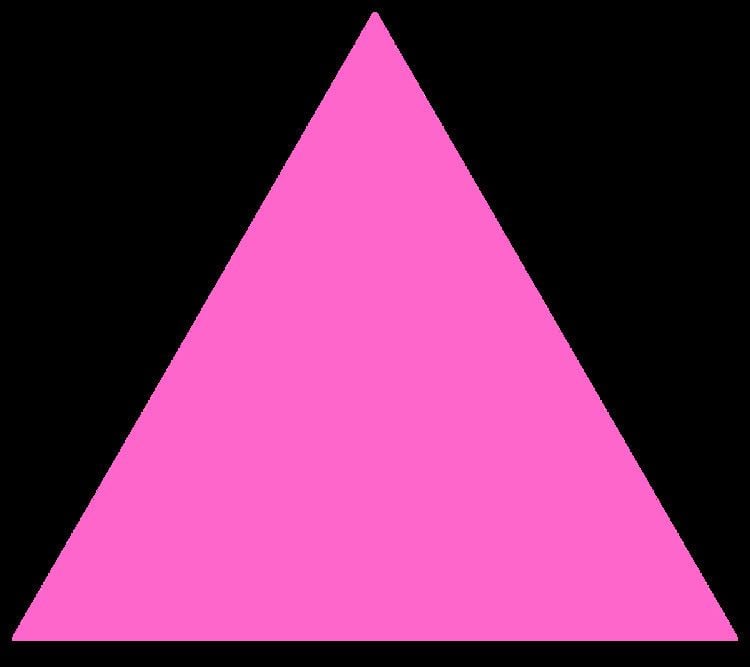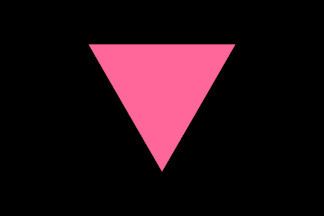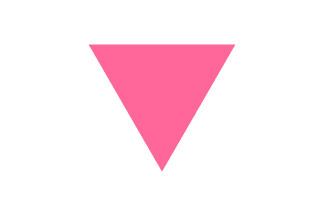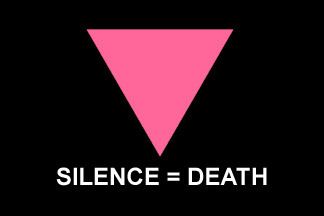 | ||
Weezer pink triangle
The pink triangle (German: Rosa Winkel) was one of the Nazi concentration camp badges, used to identify male prisoners who were sent there because of their homosexuality. Every prisoner had to wear a downward-pointing triangle on their jacket, the colour of which was to categorise them by "kind". Other colors identified Jewish people (two triangles superimposed as a yellow star), political prisoners, Jehovah's Witnesses, "anti-social" prisoners, and others the Nazis deemed undesirable. Pink and yellow triangles could be combined if a prisoner was deemed to be gay and Jewish.
Contents

Originally intended as a badge of shame, the pink triangle (often inverted from its Nazi usage) has been reclaimed as an international symbol of gay pride and the gay rights movement, and is second in popularity only to the rainbow flag.

Pink triangle short film
History

Under Nazi Germany every prisoner had to wear a concentration camp badge on their jacket, the color of which categorized them into groups. Gay men had to wear the Pink Triangle. Other colors identified Jewish people (two triangles superimposed as a yellow star), political prisoners, Jehovah's Witnesses, "anti-social" prisoners, and others the Nazis deemed undesirable.

While the number of gay men in German concentration camps is hard to estimate, Richard Plant gives a rough estimate of the number of men convicted for homosexuality "between 1933 to 1944 at between 50,000 and 63,000."
After the camps were liberated at the end of the Second World War, many of the pink triangle prisoners were often simply re-imprisoned by the Allied-established Federal Republic of Germany. An openly gay man named Heinz Dörmer, for instance, served 20 years total, first in a Nazi concentration camp and then in the jails of the new Republic. In fact, the Nazi amendments to Paragraph 175, which turned homosexuality from a minor offense into a felony, remained intact in both East and West Germany after the war for a further 24 years. While suits seeking monetary compensation have failed, in 2002 the German government issued an official apology to the gay community.
By the end of the 1970s, the pink triangle was adopted as a symbol for gay rights protest. Some academics have linked the reclamation of the symbol with the publication, in the early 1970s, of gay concentration camp survivor Heinz Heger's memoir, The Men with the Pink Triangle.
Until 1985 there was an unofficial ban on placing pink triangle wreaths at the Cenotaph, and such wreaths were removed shortly after being placed.
The AIDS Coalition To Unleash Power (ACT UP) adopted an inverted pink triangle along with the slogan "SILENCE = DEATH" as its logo shortly after its formation by six gay activists in New York City in 1987.
In 1995, after a decade of campaigning, a pink triangle plaque was installed at the Dachau Memorial Museum to commemorate the suffering of gay men and lesbians. In 2001 Robert Randolph Davis, rented a storefront boutique at 616 N Doheny Dr, West Hollywood CA, 90069 for the sole purpose of displaying his collection of 61 LGBT community armbands that he acquired years earlier from a Dr. who had gone to the concentration camps when they were being liberated. The doctor was given the armbands by a gay holocaust victim that wanted the Doctor to share them with the world. After the passing of the doctor 60 years later, his estate was auctioned off and the armbands were part of a sealed chest that was purchased by Davis. The Los Angeles times did an exclusive story of Davis's "Holiday Window of Compassion" word spread fast of this touching tribute to the LGBT community that suffered in the holocaust. The armbands were put on display in the window along with a poem Davis wrote to honor the pieces of LGBT history and to show the world and the community that they were there. People were flocking to this tribute in the thousands.The tribute remained on display till January 20, 2002
On August 3, 2011 Rudolf Brazda died at the age of 98; he was the last known homosexual deportation survivor.
In 2015 the pink triangle was included in the Legacy Walk.
The pink triangle is the basis of the design of the Homomonument in Amsterdam, the Gay and Lesbian Holocaust Memorial in Sydney, the Pink Triangle Park in the Castro neighbourhood of San Francisco and the huge 1-acre (4,000 m2) Pink Triangle on Twin Peaks that is displayed every year during San Francisco Pride weekend in San Francisco. It is also the basis of the design of the LGBT memorials in Barcelona, Sitges and Montevideo, and the burial component of the LGBT Pink Dolphin Monument in Galveston.
The Pink Panthers Movement is a militant activist group out of Denver, Colorado, USA. The PPM adopted a pink triangle with clawed panther print logo, adapted from the original Pink Panthers Patrol in New York City.
